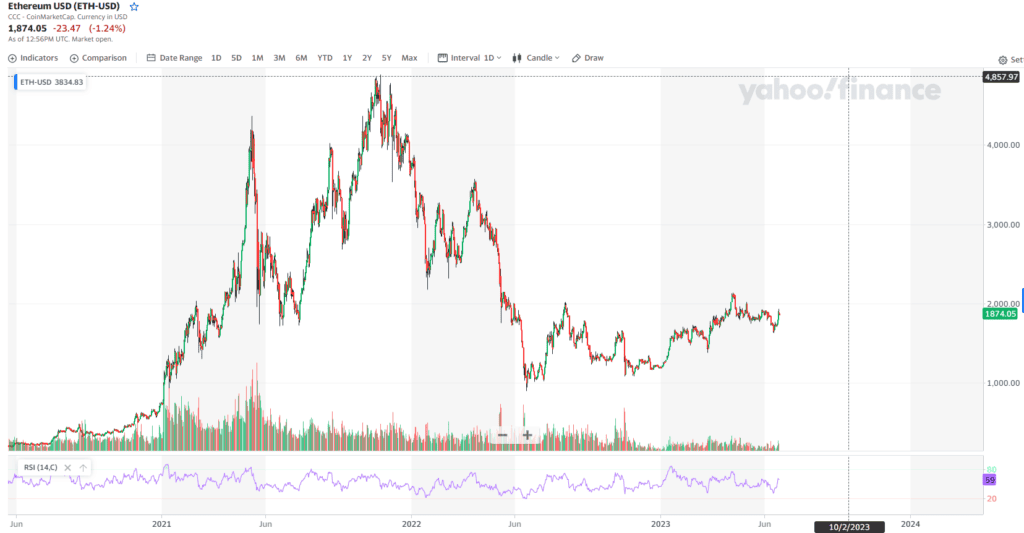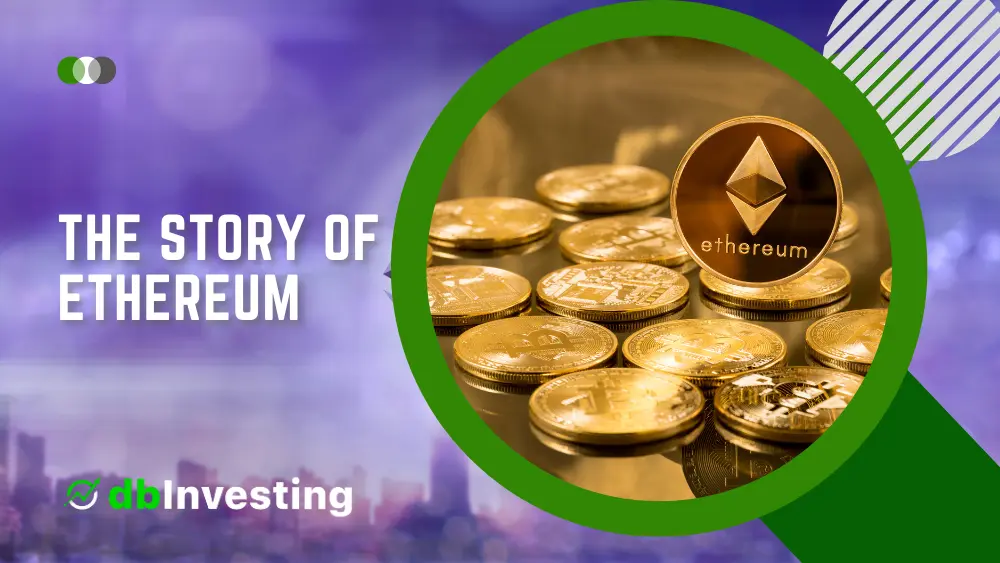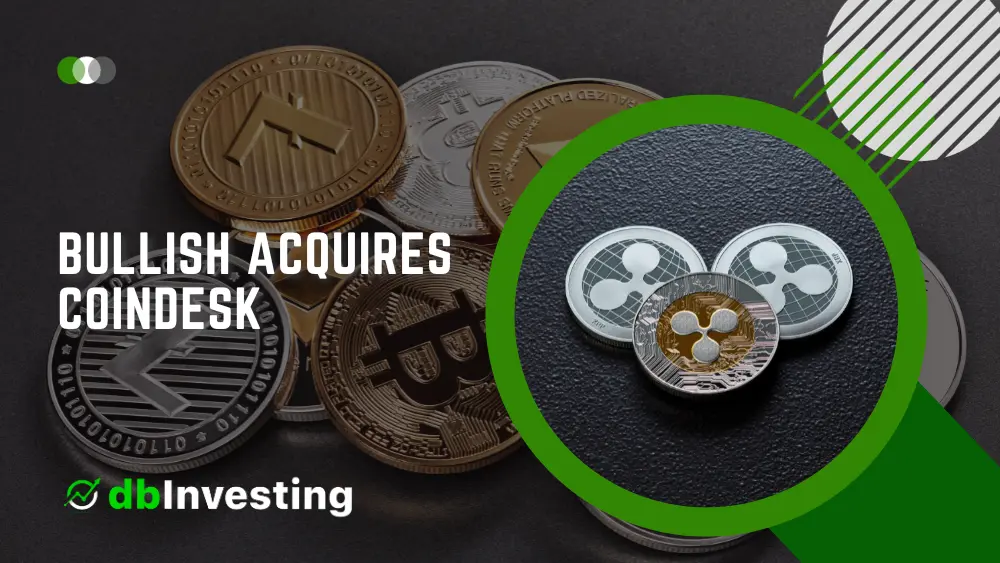- What is Ethereum?
- The Creation of Ethereum
- Key Features of Ethereum
- Ethereum Virtual Machine (EVM)
- Ethereum’s Blockchain Technology
- Smart Contracts and Decentralized Applications (DApps)
- Ethereum’s Cryptocurrency: Ether
- Ethereum 2.0 and Proof of Stake
- Use Cases of Ethereum
- Challenges and Future of Ethereum
- FAQs
Welcome to the fascinating world of Ethereum, a revolutionary blockchain platform that has transformed the landscape of decentralized applications and smart contracts.
In this article, we will delve into the story of Ethereum, exploring its inception, key features, use cases, and future prospects. So, let’s embark on this journey and discover the magic of Ethereum.
What is Ethereum?
At its core, Ethereum is an open-source blockchain platform that enables developers to build decentralized applications (DApps) and execute smart contracts. Unlike traditional centralized systems, Ethereum provides a trustless environment where transactions can be conducted securely and transparently.
The Creation of Ethereum
Ethereum was conceptualized by Vitalik Buterin, a young and visionary programmer, in 2013. Inspired by Bitcoin’s blockchain technology, Buterin envisioned a platform that could support more than just a digital currency. With the help of a dedicated team, he developed Ethereum and released it to the public in 2015.
Key Features of Ethereum
Ethereum offers several key features that set it apart from other blockchain platforms:
a. Turing-Completeness
Ethereum’s programming language, Solidity, allows developers to create complex and versatile smart contracts. This feature gives Ethereum the ability to handle a wide range of computational tasks, making it highly flexible.
b. Decentralization
Decentralization lies at the heart of Ethereum. It operates on a global network of computers called nodes, which collectively maintain the blockchain and validate transactions. This decentralized architecture ensures the security and immutability of the platform.
c. Interoperability
Ethereum provides a standardized framework for DApps to interact with each other. This interoperability fosters collaboration and enhances the overall functionality of the ecosystem.
Ethereum Virtual Machine (EVM)
The Ethereum Virtual Machine (EVM) is a runtime environment that executes smart contracts on the Ethereum network. It serves as a sandboxed environment, isolating the code from the underlying system and ensuring security and reliability.

Ethereum’s Blockchain Technology
Ethereum’s blockchain is a distributed ledger that records all transactions and smart contracts executed on the platform. It utilizes a consensus mechanism called Proof of Work (PoW) to validate and add new blocks to the chain, ensuring the integrity of the network.
Smart Contracts and Decentralized Applications (DApps)
Smart contracts are self-executing contracts with predefined rules written in code. They automatically execute the terms of an agreement once the conditions are met. DApps, on the other hand, are applications built on top of the Ethereum blockchain that leverage smart contracts to offer various services and functionalities.
Ethereum’s Cryptocurrency: Ether
Ether (ETH) is the native cryptocurrency of the Ethereum platform. It serves as a medium of exchange for transactions and acts as an incentive for validators who maintain the network’s security. Additionally, Ether can be used to fuel DApps and execute smart contracts.

Ethereum 2.0 and Proof of Stake
Ethereum 2.0 is an upgrade to the existing Ethereum network that aims to address scalability and energy efficiency concerns. It introduces a new consensus mechanism called Proof of Stake (PoS), where validators are chosen to create new blocks based on the number of tokens they hold and are willing to “stake” as collateral.
Use Cases of Ethereum
Ethereum has found applications in various industries and sectors. Some notable use cases include:
- Decentralized Finance (DeFi): Ethereum powers the booming DeFi ecosystem, enabling users to access financial services without intermediaries.
- Non-Fungible Tokens (NFTs): Ethereum is the platform of choice for creating and trading unique digital assets, such as artwork, collectibles, and virtual real estate.
- Supply Chain Management: Ethereum’s transparency and immutability make it ideal for tracking and verifying the provenance of goods throughout the supply chain.
- Governance and Voting: Ethereum’s smart contracts facilitate secure and tamper-proof voting mechanisms, enhancing transparency and trust in democratic processes.
Challenges and Future of Ethereum
As with any groundbreaking technology, Ethereum faces its share of challenges. Scalability, energy consumption, and user experience are areas that require continuous improvement. However, with the ongoing development of Ethereum 2.0 and other scaling solutions, the future looks promising for this revolutionary platform.
Conclusion
The story of Ethereum is one of innovation, vision, and transformation. From its humble beginnings to becoming a global powerhouse in the blockchain space, Ethereum has revolutionized the way we perceive decentralized applications and smart contracts.
As we move forward, Ethereum continues to push the boundaries of what is possible, opening up new opportunities and possibilities for the world of finance, governance, and beyond.
FAQs
- Is Ethereum only used for cryptocurrencies? No, Ethereum’s applications go beyond cryptocurrencies. It enables the creation of decentralized applications and facilitates various use cases such as decentralized finance (DeFi), non-fungible tokens (NFTs), supply chain management, and more.
- What is the difference between Ethereum and Bitcoin? While both Ethereum and Bitcoin are blockchain-based platforms, Ethereum provides a more versatile environment for executing smart contracts and building decentralized applications, whereas Bitcoin primarily focuses on being a digital currency.
- What is Ethereum 2.0? Ethereum 2.0 is a major upgrade to the Ethereum network that aims to address scalability issues and improve energy efficiency. It introduces a new consensus mechanism called Proof of Stake (PoS) and other enhancements to enhance the overall performance of the platform.
- Can I mine Ethereum? Yes, Ethereum can be mined using specialized hardware. However, with the transition to Ethereum 2.0 and Proof of Stake, mining will be replaced by a staking mechanism, which requires holding and “staking” Ether as collateral.
- How secure is Ethereum? Ethereum’s security is ensured through its decentralized architecture and consensus mechanisms. The network of nodes validates transactions and maintains the integrity of the blockchain, making it highly secure against tampering and hacking attempts.



